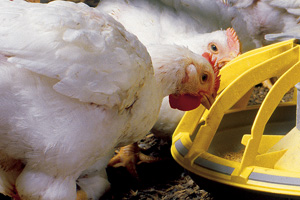US study exposes arsenic in poultry production

Chickens likely raised with arsenic-based drugs result in chicken meat that has higher levels of inorganic arsenic, a known carcinogen, according to a new study led by researchers at the Johns Hopkins Center for a Livable Future at the Bloomberg School of Public Health.
The study claims to be the first to show concentrations of specific forms of arsenic (e.g., inorganic arsenic versus other forms) in retail chicken meat, and the first to compare those concentrations according to whether or not the poultry was raised with arsenical drugs. The findings provide evidence that arsenical use in chickens poses public health risks and indicate that the Food and Drug Administration (FDA), the agency responsible for regulating animal drugs, should ban arsenicals, the authors of the study state.
Conventional, antibiotic-free, and USDA Organic chicken samples were purchased from 10 US metropolitan areas between December 2010 and June 2011, when an arsenic-based drug then manufactured by Pfizer and known as roxarsone was readily available to poultry companies that wished to add it to their feed. In addition to inorganic arsenic, the researchers were able to identify residual roxarsone in the meat they studied; in the meat where roxarsone was detected, levels of inorganic arsenic were four times higher than the levels in USDA Organic chicken (in which roxarsone and other arsenicals are prohibited from use).
However, the report has been slammed by US poultry organisation, the National Chicken Council. “It is not surprising or worrisome that very low levels of arsenic were found on chicken,” said Ashley Peterson, NCC vice president of scientific and regulatory affairs. “Arsenic is a naturally occurring element in our environment that is widely distributed within the earth’s soil, air and water.”
Peterson added, “The samples analyzed, taken as part of this extremely small, agenda-driven study, were purchased before Roxarsone was removed from the market in June, 2011, and the conclusions are used to intentionally mislead consumers.
“Even if one agrees with the scientific methods and conclusions of this controversial study, some perspective is needed. For instance, the Environmental Protection Agency (EPA) sets safety limits for the amount of arsenic in drinking water. That limit is 10 parts per billion. Researchers in this study claim to have found about 2 parts per billion of inorganic arsenic in conventional chicken, or five times less than what the EPA deems as safe for water. (To place one part per billion in perspective, this quantity is equivalent to 1.7 inches in relation to the circumference of the Earth.)
“To put the authors’ cancer risk calcuation into perspective, if a person consumed an additional one glass of water every day they would ingest approximately the same amount of inorganic arsenic, and the same calculation could be made. “Would the public be cautioned about drinking an additional glass of water each day?” Peterson asked.
Peterson concluded. “There is no documented evidence to suggest that very tiny levels of arsenic in our food supply pose any health problems.”













